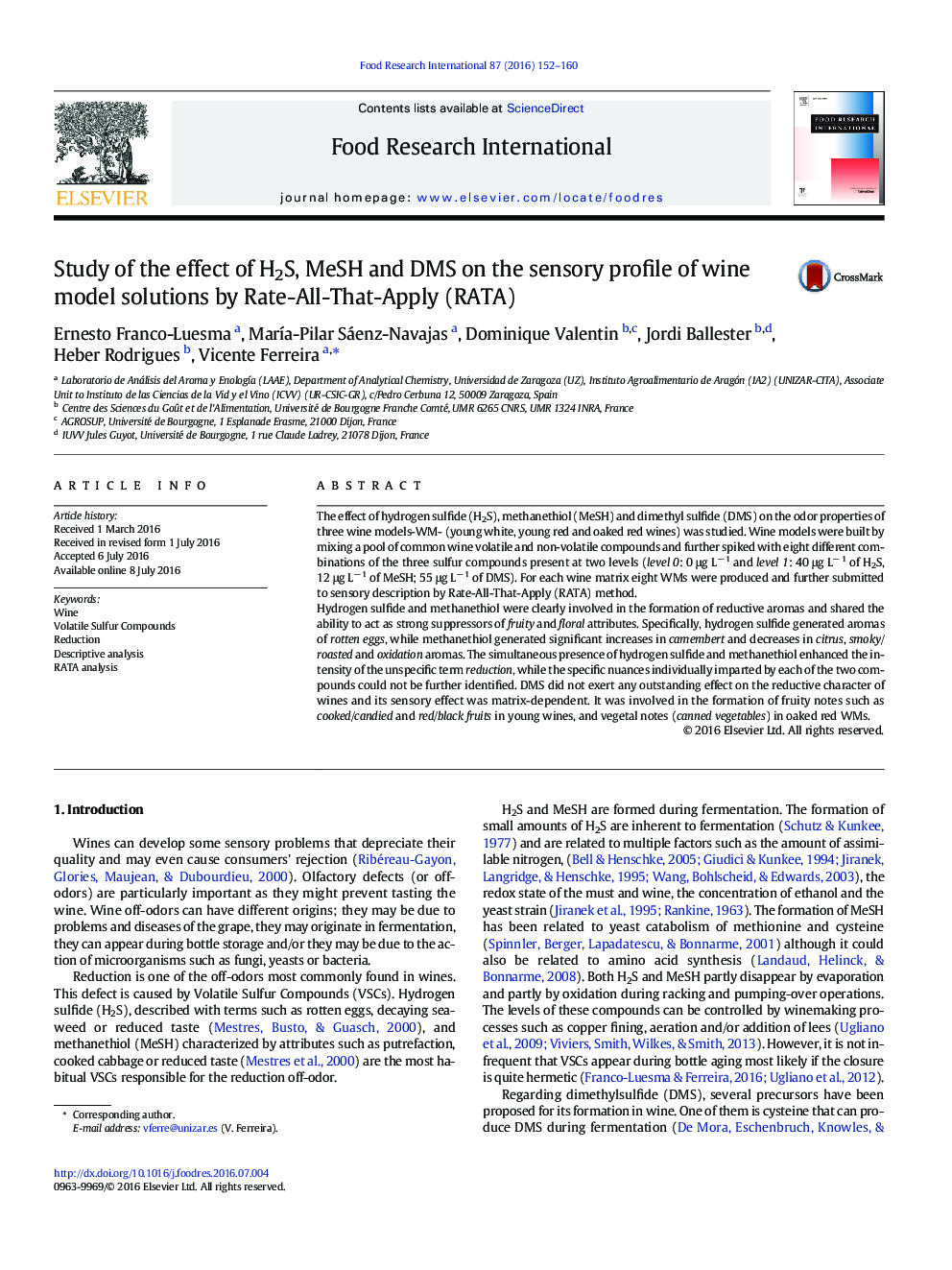| کد مقاله | کد نشریه | سال انتشار | مقاله انگلیسی | نسخه تمام متن |
|---|---|---|---|---|
| 4561211 | 1628461 | 2016 | 9 صفحه PDF | دانلود رایگان |

• Sensory effects of H2S, MeSH and DMS on three wine models were studied.
• H2S increased reduction and rotten eggs and decreased fruity and floral aromas.
• MeSH increased reduction and camembert and decreased fruity, floral and woody aromas.
• DMS increased cooked/candied and red/black fruits of white and red young wine models.
• DMS increased canned vegetables of oaked red wine models.
The effect of hydrogen sulfide (H2S), methanethiol (MeSH) and dimethyl sulfide (DMS) on the odor properties of three wine models-WM- (young white, young red and oaked red wines) was studied. Wine models were built by mixing a pool of common wine volatile and non-volatile compounds and further spiked with eight different combinations of the three sulfur compounds present at two levels (level 0: 0 μg L− 1 and level 1: 40 μg L− 1 of H2S, 12 μg L− 1 of MeSH; 55 μg L− 1 of DMS). For each wine matrix eight WMs were produced and further submitted to sensory description by Rate-All-That-Apply (RATA) method.Hydrogen sulfide and methanethiol were clearly involved in the formation of reductive aromas and shared the ability to act as strong suppressors of fruity and floral attributes. Specifically, hydrogen sulfide generated aromas of rotten eggs, while methanethiol generated significant increases in camembert and decreases in citrus, smoky/roasted and oxidation aromas. The simultaneous presence of hydrogen sulfide and methanethiol enhanced the intensity of the unspecific term reduction, while the specific nuances individually imparted by each of the two compounds could not be further identified. DMS did not exert any outstanding effect on the reductive character of wines and its sensory effect was matrix-dependent. It was involved in the formation of fruity notes such as cooked/candied and red/black fruits in young wines, and vegetal notes (canned vegetables) in oaked red WMs.
Figure optionsDownload as PowerPoint slide
Journal: Food Research International - Volume 87, September 2016, Pages 152–160